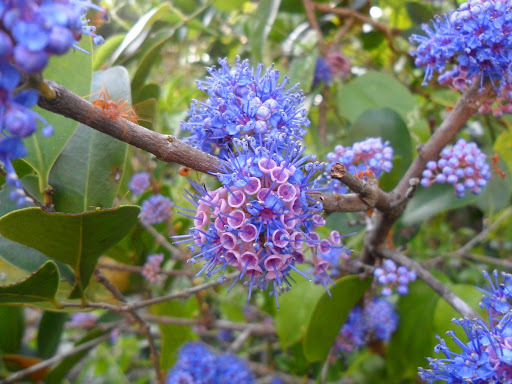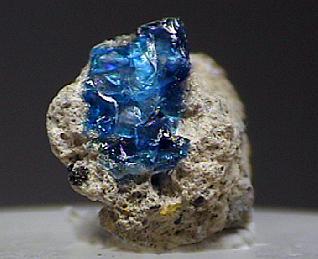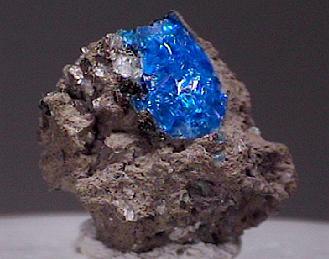A collection of images showing the wonders of nature. Through this blog you can appreciate biodiversity, wildlife, landscape, geology and mineralogy worldwide as well as artistic expressions of nature and some oddities.
Don't wanna be here? Send us removal request.
Photo

L'homme au chapeau
154 notes
·
View notes
Photo

Addo Elephants, South Africa, 2013 [Aperture for Adventure] [facebook - twitter - prints]
2K notes
·
View notes
Photo

Bigfoot Splayfoot Salamander - Chiropterotriton magnipes
Chiropterotriton magnipes (Caudata - Plethodontidae), is a cave dwelling salamander known only from south-eastern San Luis Potosi and eastern Queretaro, Mexico.
These little fellows have a total length of around 80-120 mm, with the tail accounting for slightly less than half of this measurement. The head is flat and wide, with large bulging eyes. This species is unique among the splayfoot salamanders in the fullness of the wedding of its feet and because it has pad-like structures on the tips of its fingers and toes.
The Bigfoot Splayfoot Salamander is listed as Critically Endangered on the IUCN Red List; it has been seen very rarely in recent years, despite searches.
References: [1] - [2]
Photo credit: ©Rodrigo Villegas | Locality: not indicated (2011)
#nature#animals#bigfoot splayfoot salamander#chiropterotriton magnipes#chiropterotriton#mexico#fauna#wildlife#critically endangered#salamander#amphibia#caudata#plethodontidae#zoology#original
1K notes
·
View notes
Photo


Hessonite on matrix
Locality: Mana Mine, Barang-Turghao (Mor-Darra), Bajaur Agency, Federally Administered Tribal Areas (FATA), Pakistan.
Photo credit: ©Crystal-Treasure
537 notes
·
View notes
Photo


Ironwood tree - Memecylon umbellatum
Also referred to as Delek Air tree, Memecylon umbellatum (Myrtales - Melastomataceae), is a large shrub or small tree, up to 8-14m tall, that produces showy clusters of amazing bright purple flowers, about 1 cm each.
This tree, which can be found in Peninsular India and Sri Lanka, is not only beautiful, but also useful since it has several traditional and pharmacological uses. It provides hard timber used for building houses and boats, and a yellow dye can be extracted from the leaves and the bark that is used to treat bruises and various ailments.
References: [1] - [2] - [3]
Photo credit: Photo credit: ©Nuwan Chathuranga | Locality: Sri Lanka (2014)
#nature#plants#trees#flowers#ironwood tree#memecylon umbellatum#memecylon#india#flora#myrtales#melastomataceae#purple#pink#botany#pharmacology#original
2K notes
·
View notes
Photo

Great Blue Heron - Ardea herodias
The Great Blue Heron, Ardea herodias (Pelecaniformes - Ardeidae), is the largest of the North American herons. Though very common and widespread from Canada to north of South America, find these herons is always a majestic sight, specially when they mate, such as this male displaying.
Displays include stretching neck up with bill pointing skyward, flying in circles above colony with neck extended, stretching neck forward with head and neck feathers erected and then snapping bill shut.
Despite their impressive size (up to 137 cm in length and up to 201 cm in wingspan), Great Blue Herons weigh only 5 to 6 pounds thanks in part to their hollow bones (a feature all birds share).
References: [1] - [2]
Photo credit: ©Ryan Bennett | Locality: Wakodahatchee Wetlands, Delray Beach, Florida, US (2007)
#nature#animals#great blue heron#ardea herodias#ardea#us#florida#fauna#wildlife#heron#birds#aves#pelecaniformes#ardeidae#zoology#ornithology#original
641 notes
·
View notes
Photo

Hey friends, I was lost in a rough sea of work for a while, but .... I’m back
Photo credit: ©Noriaki Tanaka (CC BY 2.0)
1K notes
·
View notes
Photo





The Rainbow Nudibranch (Dendronotus iris) is a terrifying beast of hellish fire and infernal flame that resides on the western coast of North America.
There are red ones, orange ones, pink, purple and white ones, and I guess that’s why they’re called Rainbow Nudibranches. But they all look like they’re on fire!
The flames are really branching cerata that allow this large sea slug to absorb all the oxygen it needs. The very biggest individuals can reach as much as a foot long, but they’re usually about a third of that.
Rainbow Nudibranches feed on the tentacles of tube anemones, which are a bunch of creatures that look like sea anemones but live in a tube.
The Rainbow Nudibranch pounces on them and won’t let go until they’ve bitten off some tentacles, even if they get dragged halfway down the tube!
…Images: Ed Bierman/Patrick Webster
#nature#animals#rainbow nudibranch#dendronotus iris#dendronotus#north america#fauna#underwater#sea life#sea slug#mollusca#gastropoda#nudibranchia#dendronotidae#zoology
3K notes
·
View notes
Photo

- I was waiting for you -
{First summer sunset}
4K notes
·
View notes
Photo

Shield-backed Bug - Pachycoris klugii
Pachycoris klugii (Heteroptera - Scutelleridae) is a common species in Mexico and Central America that in the past has been misidentified as P. torridus. It is an aposematic species that is brightly colored, with metallic green, and yellow, orange, or red spots. Extensive variation was observed in the color pattern of adults.
There have been several reports of maternal care in Heteroptera, according to Wilson (1979) it corresponds to a subsocial behavior in which the parent offers shelter with its body, carries the nymphs around on its back or venter, or simply stands close by. Maternal behavior was related to egg parasitism, habitat and host plant phenology.
References: [1] - [2]
Photo credit: ©Eduardo Axel Recillas Bautista | Locality: Hidalgo, Mexico (2008)
#nature#animals#shield-backed bug#pachycoris klugii#pachycoris#mexico#hidalgo#fauna#bug#arthropoda#insecta#hemiptera#heteroptera#scutelleridae#zoology#entomology#red#green#parental care#original
949 notes
·
View notes
Photo

Vanadinite on Barite - Mibladen, Morocco
848 notes
·
View notes
Photo


Orange Oak Bolete - Leccinum aurantiacum
The two mushrooms in the photos are the bolete Leccinum aurantiacum (Boletales - Boletaceae), but in a different stage of growth, showing changes in color and shape over time.
Morphologically, Leccinum aurantiacum can be separated from similar species (in Europe, at least) on the basis of the brownish-reddish stipital ornamentation that is already reddish in young fruit-bodies, the red to reddish brown cap, and the presence of overhanging flaps. However, if the specimen is collected, it may be confused with Leccinum scabrum, because the mushroom lost their color brilliance and becomes noticeably darker.
Leccinum aurantiacum is a European species, a mycorrhizal "generalist" associating with hosts ranging from Fagus and Quercus to Betula and Populus. It is generally considered to be a good edible mushroom in Europe.
Syn. Leccinum rufum
References: [1] - [2]
Photo credits: ©Menko van der Leij | [Top] - [Bottom] | Locality: not indicated (2013)
#nature#mushromms#orange oak bolete#leccinum aurantiacum#leccinum#europe#fungus#fungi#basidiomycota#agaricomycetes#boletales#boletaceae#mycology#orange#original
295 notes
·
View notes
Photo

Black Orchid - Fredclarkeara Black Lace 'Baker's Dark Angel'
In nature, black flowers are rare. The reality is that there is almost no plant in the world that is truly black in color. Most are shades of deep blue or reds or purples. This is also true about orchid flowers. Growers and hybridizers have tried many different orchid plants and hybrid orchid varieties to try to get to a truly black flower.
Among the most notable hybrids (since 2010) with truly black flowers (currently commercially available from Sunset Valley Orchids) you can find Fredclarkeara (Asparagales - Orchidaceae), an intergeneric hybrid between the orchid genera Catasetum, Clowesia and Mormodes. (Ctsm. x Cl. x Morm.).
The Fredclarkeara breeding produces flowers that are fragrant, have lots of color and are long lasting. As you can see on this one in the photo, the Fredclarkeara Black Lace 'Baker's Dark Angel' is indeed black.
References: [1] - [2]
Photo credit: ©Brent Baker | Locality: cultivated (2013)
#nature#plants#flowers#orchids#black orchid#fredclarkeara#hybrid#black lace#asparagales#orchidaceae#botany#intergeneric#catasetum#clowesia#mormodes#black#original
27K notes
·
View notes
Photo


Hauyne
Locality: Niedermendig Mayen, Eifel, Germany.
Hauyne shares with Lazurite the same chemical formula but with a variation of the sulfide over the sulfate. Hauyne has the sulfate dominating, whereas Lazurite has the sulfide dominating. Much of the known Lazurite material is actually sulfate-dominating, which means it is in fact Hauyne and not Lazurite.
Reference: [1]
Photo credit: ©Trinity Minerals
289 notes
·
View notes
Photo

Lincoln's Web-Footed Salamander - Bolitoglossa lincolni
Bolitoglossa lincolni (Plethodontidae) is a stout salamander with a bright coral red coloration on the back, tail, and dorsal surfaces of limbs, and sometimes the fingers and toes. It is known from the central plateau of Chiapas, Mexico, and mountainous areas of western Guatemala. It lives in low vegetation (probably including mosses), under bark, and in bromeliads, with a broad enough habitat that its populations are not declining. However, due to destruction of habitat, the species is listed as Near Threatened on the IUCN Red List.
Bolitoglossa species are able to propel themselves forward by an "explosive tail flip" that carries them off the vegetation – a protective device when in danger during its daylight resting hours. Another protective behavior is to raise its tail as an offering to a predator. If the tail is grabbed, the salamander can disarticulate and run off, leaving the predator with only the tail.
Reference: [1] - [2] - [3]
Photo credit: ©Todd Pierson (CC BY-NC-SA 2.0) | Locality: Cuchumatanes, Guatemala (2011)
#nature#animals#lincoln's web-footed salamander#bolitoglossa lincolni#bolitoglossa#guatemala#fauna#wildlife#slamander#near threatened#amphibia#caudata#plethodontidae#zoology#red#original
531 notes
·
View notes
Photo

'Starlight Dunes' by michaelanderson
2K notes
·
View notes
Photo

Lycoperdon pyriforme by Corrie White
#nature#mushrooms#pear-shaped puffball#lycoperdon pyriforme#lycoperdon#fungus#fungi#basidiomycota#agaricomycetes#agaricales#agaricaceae#mycology#sporulation
323 notes
·
View notes